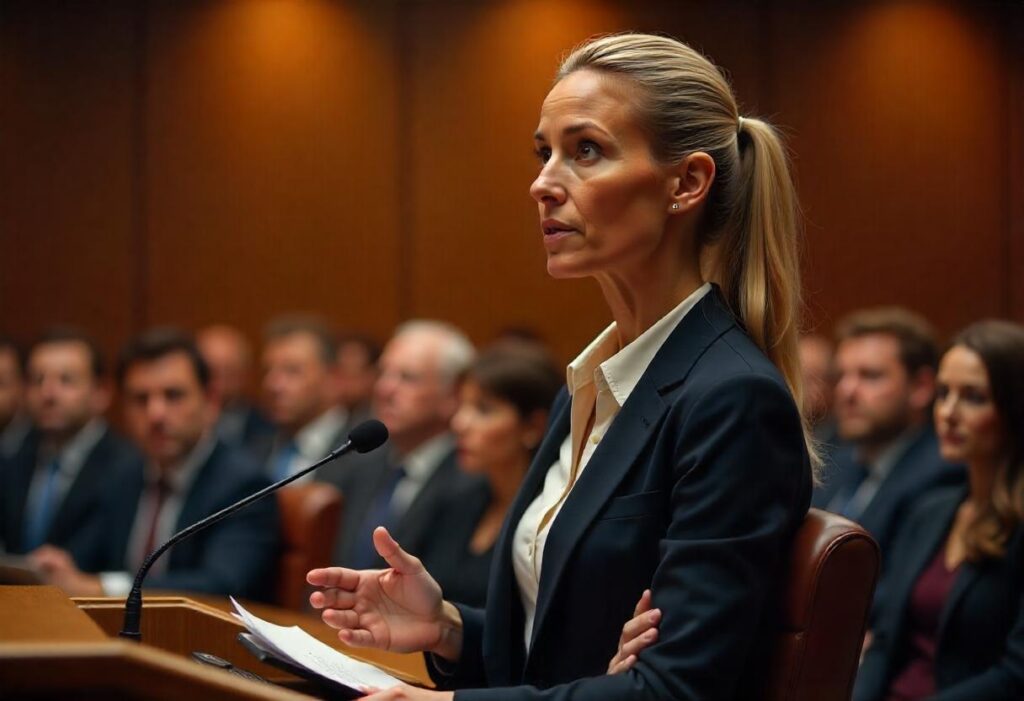
Train travel is a crucial aspect of America’s transportation infrastructure, bringing cities together, hauling goods, and offering a green mode of transportation over cars and airplanes. In spite of the convenience of trains, accidents do occur and can have catastrophic results, including serious injury, death, and extensive property destruction. Annually, the Federal Railroad Administration (FRA) reports hundreds of train-related accidents ranging from derailments to crossing collisions.
For victims and families, the experience is often a tangled web of legal processes to receive compensation. A train accident lawyer is vital in getting through these, fighting for justice against railroads, manufacturers, and other responsible parties. This all-encompassing, U.S.-oriented guide examines the role of a train accident lawyer, what kinds of accidents they handle, legal implications, and why it’s important to hire one.
Table of Contents
The Incidence of Train Crashes in the U.S.
Train crashes are a major issue in the entire United States, with figures from the FRA showing more than 1,000 occurrences each year, such as derailments, collisions, and pedestrian collisions. In 2023 alone, the FRA reported 749 train crashes, with 153 deaths and 4,123 injuries. These accidents take place on commuter trains such as Amtrak, freight trains from businesses such as Union Pacific and CSX, and city transit systems such as subways and light rails. The typical causes are human error, mechanical failure, track conditions, and neglect at railroad crossings.
The financial burden is astronomical, with damages commonly surpassing millions of dollars in cargo loss, infrastructure damage, and medical expenses. For victims, the personal cost—physical harm, emotional distress, and financial loss—can be devastating. A train accident lawyer is an expert in making responsible parties pay, insuring victims get the compensation they are entitled to.
What Is a Train Accident Lawyer?
A train accident lawyer is an injury lawyer who specializes in accidents or fatalities resulting from train mishaps. Such Train Accident Lawyers are experienced in federal and state transportation law, especially the Federal Employers’ Liability Act (FELA) for railroad employees and the Safety Appliance Act. They also have experience in investigating intricate accidents, finding responsible parties—such as railroad corporations, equipment vendors, or regional authorities—and seeking compensation for damages.
Train accident lawyers are a varied group of clients who have been injured in train accidents, including passengers, railroad workers, pedestrians, and drivers who are involved in crossing collisions. They are adept at negotiating with the insurance industry and ready to battle in court if need be. Their aim is to obtain compensation for medical bills, lost income, pain and suffering, and, in the event of death, wrongful death damages.
Types of Train Accidents
Train accidents are diverse in origin and extent and call for tailored legal response. A train accident lawyer handles the following situations:
1. Derailments
Derailments happen when trains derailed from tracks because of defects in the tracks, over speeding, or mechanical issues. Derailments often lead to large numbers of casualties and spills of hazardous materials.
Train Accident Lawyers examine records of maintenance and safety compliance to determine liability.
2. Collisions at Railroad Crossings
Train-to-vehicle or pedestrian collisions are frequent, usually resulting from faulty signals, poor warnings, or driver negligence.
Liability can include railroad companies, municipalities, or signal manufacturers.
3. Passenger Train Accidents
Overcrowding, jerk stops, or equipment malfunctions can harm passengers on commuter trains or long-distance routes such as Amtrak.
Lawyers determine if the railroad was negligent in passenger safety.
4. Worker Injuries
Railroad workers, including conductors and maintenance personnel, are at risk from hazardous working conditions, resulting in amputations or spinal injuries.
FELA is the law under which these claims are made, as opposed to regular workers’ compensation.
5. Hazardous Material Spills
Chemical or flammable products transported by freight trains have the potential for environmental catastrophe as well as medical issues if there is a derailment.
Train accident lawyers seek damages from shipping companies and railroads due to negligence.
6. Pedestrian Accidents
Trespassers or those around tracks get hit by trains because of inadequate fencing or no warning.
Liability is determined based on whether the railroad used reasonable care.
7. Mechanical Failures
Faulty brakes, wheels, or signaling systems can cause disastrous accidents.
Product liability suits are aimed at manufacturers or maintenance contractors.

Legal Framework for Train Accident Claims
Train accident cases have an assortment of federal and state laws, making the legal process complex. Some of the main legal bases include:
1. Federal Employers’ Liability Act (FELA)
Passed in 1908, FELA covers railroad employees who are injured on the job through employer negligence. It differs from workers’ compensation in that it provides for jury trials and greater damages.
The plaintiff must establish the railroad’s negligence was a cause of the injury.
2. Safety Appliance Act and Locomotive Inspection Act
These federal statutes require particular safety standards for railroad equipment. A violation can prove liability without the need to show negligence.
Attorneys utilize these laws to bolster claims of mechanical failure.
3. Negligence
General negligence comes into play when a party is negligent in taking reasonable care, like neglecting track maintenance or poor training.
The elements are duty, breach, causation, and damages.
4. Premises Liability
Companies operating railroads or owners of property can be held responsible if hazardous conditions at crossings or stations lead to accidents.
This pertains to pedestrians or motorists injured on railroad property.
5. Product Liability
Producers of faulty train parts (e.g., brakes, signals) may be held responsible under theories of strict liability or negligence.
Proof of defective design or manufacturing defects is essential.
6. Wrongful Death
Loved ones of killed victims can bring wrongful death actions for funeral expenses, loss of support, and emotional distress.
Eligibility and damage limits are governed by state law.
The Role of a Train Accident Lawyer
Processing a train accident claim involves strategy. The responsibilities of a train accident lawyer include:
1. Case Evaluation
Train accident lawyers read over accident reports, medical files, and eyewitness statements to determine liability and damages.
They determine all possible defendants, ranging from railroads to equipment manufacturers.
2. Evidence Gathering
Pursuit of black box data, track inspection records, and expert witness testimonies of engineers or physicians is crucial.
Train accident lawyers might go to the site of the accident to photograph conditions.
3. Negotiation with Railroads and Insurance Companies
Train companies and their insurers tend to make low offers or dispute liability. Train accident lawyers aggressively negotiate to recover the largest possible compensation.
They reject defenses such as contributory negligence.
4. Litigation
When settlements do not work, train accident lawyers bring lawsuits and plead clients’ cases in court. This includes meeting federal filing deadlines, usually two or three years.
They offer proof and argue before judges or juries.
5. Advice and Assistance
Victims can experience long-term disabilities or bereavement. Train accident lawyers link clients to medical and psychological services.
They work out the legalities, minimizing stress while recovering.

Why Choose a Train Accident Lawyer?
Train accidents tend to have serious injuries such as traumatic brain injury, amputation, or burns that need extensive care. Engaging a train accident lawyer provides:
Maximizing Compensation: Train accident lawyers ensure all damages—medical expenses, lost wages, and pain—are recovered, including future requirements.
Working with Complicated Laws: Federal laws and multi-party fault call for specialized knowledge.
Decreasing Burden: Legal action can be daunting; a train accident lawyer facilitates the process.
Responsibility: They hold accountable responsible railroads or manufacturers.
Setbacks in Train Collision Cases
These cases involve special challenges:
- Establishing Liability: Multiple parties and federal regulation make it difficult to determine fault.
- Determining Damages: Long-term consequences such as disability or PTSD demand expert assessment.
- Insurance Denial: Railroads have deep pockets to battle claims.
- Statute of Limitations: Failure to meet deadlines, usually two or three years, prevents recovery.
How to Choose the Appropriate Train Accident Lawyer
Picking a lawyer is important. Think about:
- Experience: Seek a history with train accident cases, such as FELA claims.
- Resources: Cases may require engineers, economists, and investigators—availability is important.
- Reputation: Read reviews, case results, and bar association ratings.
- Communication: Select a lawyer who clearly explains options.
- Contingency Fees: Most practice no-win, no-fee; ask about the percentage.
State-Specific Insights
Train accident statutes differ from state to state, determining consequences:
- California: Heavy rail traffic and rigorous safety regulations. Frequent crossing collisions in urban cities.
- Texas: Heavy freight corridors enhance derailment hazards. Vigorous FELA enforcement.
- Illinois: Rail hub of Chicago causes passenger and employee injury cases.
- New York: Subway accidents and Amtrak accidents are frequent, with strong liability laws.
A local train accident lawyer is aware of these differences.
Compensation in Train Accident Cases
Victims can recover:
- Economic Damages: Medical expenses, rehabilitation, lost income, and future treatment.
- Non-Economic Damages: Suffering, pain, and emotional distress.
- Punitive Damages: For gross negligence, discouraging future wrongdoing.
- Wrongful Death: Burial expenses, loss of support, and compensation for grief.
Dollar figures based on evidence and state limits.
Case Studies Worth Remembering
- Case 1: Derailment Settlement: A 2021 derailment in Ohio brought $15 million to victims with the train accident lawyer demonstrating track neglect.
- Case 2: Crossing Collision: A Texas family was awarded $3 million after a train hit their car due to a defective signal.
- Case 3: Worker Injury: A California conductor was injured and awarded $2 million under FELA for a back injury caused by unsafe equipment.
These highlight legal impact.
Prevention and Safety
Railroads should:
- Regularly keep tracks and signals in good condition.
- Install state-of-the-art crossing protections such as gates and lights.
- Train staff in safety procedures.
Public awareness of dangers at crossings is also important.
The Human Impact
Survivors can suffer long-term disabilities or PTSD. Lawyers assist therapists to record this for claims, facilitating recovery with adaptive assistance.

Future Trends
Technologies such as Positive Train Control (PTC) will decrease accidents, but new liabilities (e.g., software faults) will develop. Lawyers will have to adapt to these changes.
Conclusion
Train accidents have a permanent impact on victims and communities. A train accident lawyer is a crucial ally, seeking justice and reasonable compensation. If you or someone you love has been injured, seeking the guidance of an experienced lawyer is the beginning of justice and healing.
